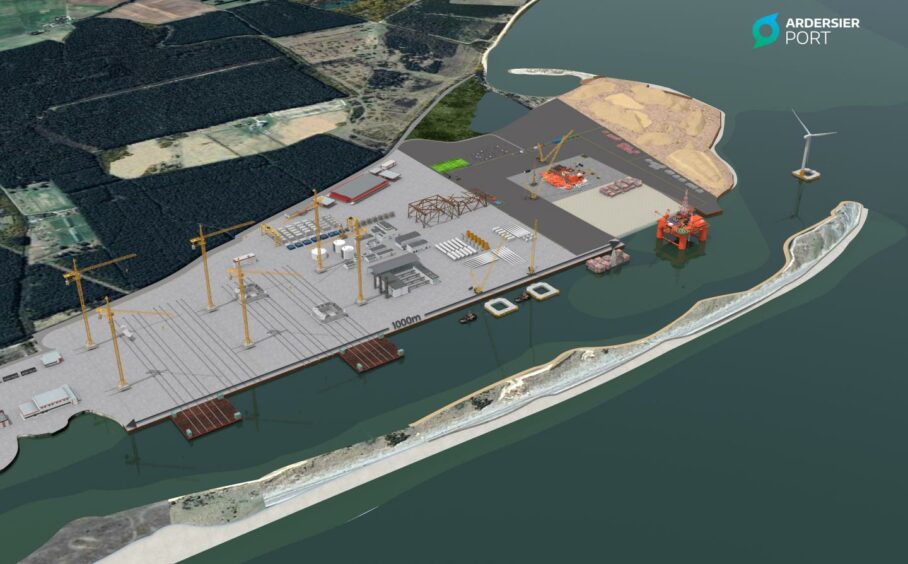
Panellists at a floating wind event in Aberdeen said the sector was ready for commercial deployment but must now work to get projects in the water lest the UK lose its valuable head start.
Convened as part of a session titled ‘Entering the global age of offshore wind’, speakers at the Floating Offshore Wind 2022 event in Aberdeen made clear that the emerging industry was now ready to move past the demonstration phase.
However, session chairwoman and Scottish Renewables chief executive Claire Mack noted the sector faces key challenges on price, ports and project pipelines.
Rebecca Williams of the Global Wind Energy Council pointed to the scale of the global opportunity for the emerging technology, with 2,000GW of offshore wind capacity needed globally to meet 2050 targets, according to the International Energy Agency (IEA). Of this, current pledges amount to around 370GW of capacity by 2030.
Floating wind will form a substantial portion of this, owing to its ability to be deployed in deeper waters with more favourable winds.
Ms Williams said the UK is “in a good, strong leadership position right now” compared with the rest of the world.
“The thing is, we’ve got to hold onto that and there are quite a lot of countries who are now nipping at our heels,” she added, citing the aggressive expansion of markets such as the US and South Korea also keen to industrialise the technology.
Price
Pablo Necochea, lead advisor for floating at turbine manufacturer Vestas, affirmed his group’s readiness to meet the growing market.
“From a turbine manufacturer point of view, we’re certainly ready to enter the commercial scale,” he told the panel. “Now we need to take the leap – and what’s stopping us is the rate of manufacture of those floaters and the supply chain needed to manufacture those floaters.”
It was a point echoed by Alan Hannah, partner at Copenhagen Offshore Partners, who agreed that the industry must “get floaters in the water.”
“There is no silver bullet which will take the [levelized cost of energy] LCOE from a floating offshore wind farm today to the cost level that we want it to be tomorrow. The only way of doing that is through industrialisation and by putting volumes of floating offshore wind into the water.”
Yet the session also heard that prices seen so far represented a headwind for development. Panellists unanimously agreed the strike price of £87.30/MWh awarded to a small floating wind project under the most recent Contract for Difference (CfD) round was below what the industry could reasonably support.
Added Mr Hannah: “The general consensus of all the floating developers is that is not where the LCOE is for floating right now, so it doesn’t work.”
Shell UK business manager for offshore wind, Melissa Read, also warned there was a “real risk” that in attempting to drive down LCOEs too quickly Scotland and the UK could lose out on the wider benefits of supply chains.
“We’re in this dilemma in the UK where we have the local content requirement – we really want to be investing within Scotland, within the UK. But if we drive LCOEs down too quickly, then then that won’t happen,” she added.
“We need to be looking into the future as to sustainably developing this pipeline and not just developing it to meet these 2030 targets.”
Ports
Ports and harbour infrastructure too must form a key plank of any floating wind strategy.
Mr Hannah said the UK’s commercial ports were not state-owned and therefore need a commercial business case which is solid enough to be able to invest in vital infrastructure.
Much of this, he said, is “technology agnostic” – a matter of hectares, cranes, labour and water depth that can be invested in. Yet he suggested government guidance would help to guide more strategic decisions.
“We can either wait for the developers to under the current regimes to get the enough certainty in their own commercial business cases to then invest – or we can do something different to get these ports invested in earlier.”
“That’s where the government and the developers need to work together to talk about what is the sensible way in which we can invest in these ports – or not invest in them – to give this certainty, and that allows the ports themselves to make that investment.”
Mr Necochea said it may even be possible to build new models of working, which would enable the sharing of one port for mutiple projects, offering a host of potential synergies.
Pipeline
In addition to the visibility of projects offered by schemes such as ScotWind, Ms Read pointed to the value of diversified strategies for offtake – meaning developers were not reliant wholly on CfDs, for example.
“It’s about kind of diversification and really keeping an open mind as to different offtake methods for example, electrolysis, hydrogen and so on,” she explained.
And while current turmoil in markets may present a short-term challenge to investment and finance, the panel reaffirmed that developers should maintain a “long term perspective.”
Ørsted’s global floating offshore wind programme director Gabriel Davies urged the importance of staying on course, adding: “Right now things are very challenging in the geopolitical landscape and financially of course, but we are talking about long-term investments, and for floating there are long development timelines still to go.
“What I wouldn’t want is any kind of sense of panic that this is going to derail floating in the mid to longer term.
“This is the kind of industry that actually will bring more stability and so we should make sure that we’re still maintaining that focus and positivity for investors.”
Recommended for you

 © Supplied by Ardersier Port
© Supplied by Ardersier Port